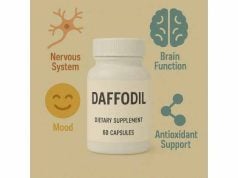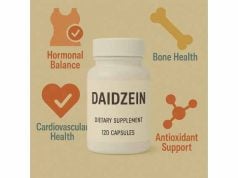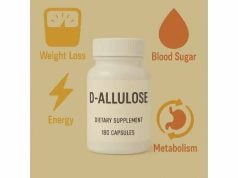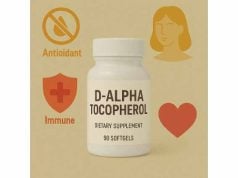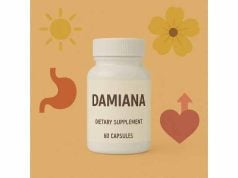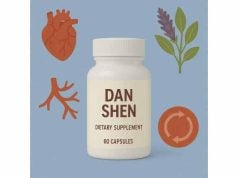Wild yam (Dioscorea villosa) is a North American vine whose knobby root has a long history in herbalism for cramps, digestive upsets, and women’s health complaints. Today you’ll also see it in creams and serums marketed for “hormone balance” or soothing irritated skin. Much of the buzz comes from diosgenin—a plant steroid found in wild yam that chemists can convert into hormones in the lab. Importantly, the human body does not perform that conversion. Evidence for oral benefits remains limited, while topical uses center on cosmetic skin-calming. If you’re curious about wild yam, this guide explains what it can and cannot do, who might consider a trial (usually topical), how to choose products, and how to use them safely. You’ll also find a clear summary of the current research and practical pointers to avoid common pitfalls.
Essential insights for Dioscorea villosa users
- May soothe skin when used topically; evidence for menopausal symptom relief is limited and inconsistent.
- Do not expect wild yam to convert into progesterone in your body; that only happens in a laboratory process.
- Typical cosmetic concentrations range from 0.1–0.3% extract; older formulas used up to 15% but this is uncommon today.
- Avoid use if you’re pregnant or breastfeeding, or if you have hormone-sensitive conditions unless your clinician agrees.
Table of Contents
- What is Dioscorea villosa and how does it work?
- What benefits are proven and what are not?
- How to choose and use wild yam products
- Dosage and timing: what actually makes sense?
- Safety, risks, and who should avoid it
- Research summary and what to watch next
What is Dioscorea villosa and how does it work?
Dioscorea villosa is commonly called wild yam (not to be confused with sweet potatoes or edible “yams” in grocery stores). The underground rhizome contains steroidal saponins—chiefly diosgenin—plus tannins and other phytochemicals. In the mid-20th century, diosgenin became an industrial starting material for synthesizing progesterone and other hormones. That history fuels today’s claims. But there’s a crucial distinction: the conversion from diosgenin to human hormones requires laboratory chemistry; the human body does not transform diosgenin into progesterone. Understanding that difference sets realistic expectations.
Mechanistically, saponins can interact with cell membranes and may show anti-inflammatory or antispasmodic actions in lab models. Extracts of D. villosa have demonstrated in vitro effects (for example, on inflammatory signaling and certain cancer cell lines) and in animals, but these findings don’t automatically translate into human benefits. Traditional uses focus on cramping (colic, menstrual pain) and digestive discomfort; modern marketing often targets menopausal symptoms and “hormone balance.”
Forms you will encounter include:
- Topical cosmetics: creams, serums, and lotions listing “Dioscorea villosa (wild yam) root extract.” These are sold for skin soothing and cosmetic care, not for treating menopause.
- Oral supplements: capsules or tinctures containing powdered root or extract. Label language varies widely, and products are not standardized consistently for diosgenin.
Two other points reduce confusion:
- Species matter. Studies sometimes cite other Dioscorea species (e.g., Dioscorea alata, the purple yam). Results from those plants don’t necessarily apply to D. villosa.
- Creams vs. capsules. The best-controlled clinical study of wild yam focused on topical cream for menopausal symptoms and found no advantage over placebo. Oral evidence is even more limited and inconsistent.
Bottom line: wild yam supplies diosgenin and other constituents with plausible biological activity, but human clinical benefits remain unproven for most marketed uses. Expect cosmetic soothing from topical products; be cautious about health claims for oral forms without strong trials behind them.
What benefits are proven and what are not?
Menopausal symptoms (hot flashes, night sweats, mood): The most rigorous test to date evaluated a wild-yam cream in postmenopausal women and reported no significant difference versus placebo on symptoms or measured hormones after three months. A narrative and systematic survey of complementary approaches similarly concludes that evidence for wild yam is limited and inconsistent. You may see headlines about “yam” helping menopause, but some of those studies used Dioscorea alata (purple yam) or multi-herb blends, which does not establish efficacy for D. villosa.
Cramps and spasms: Historically, herbalists used wild yam for biliary colic or menstrual cramps. Modern controlled trials are lacking. If cramps are your main concern, proven options (from diet, targeted medications, or other therapies) generally have stronger evidence.
Skin soothing (topical): Wild yam root extract appears in moisturizers and serums as a cosmetic ingredient. Safety assessments report current typical use around 0.3% in leave-on products, with historical formulas as high as 15% decades ago. Cosmetic claims (soothing, conditioning) align with this role. Because cosmetics are not drugs, they are not evaluated for treating medical skin conditions—but many people use such formulas for comfort and barrier support.
Metabolic, bone, or cardiovascular effects: Controlled data are sparse. In the topical menopause trial, there were no significant changes in lipids or hormones. Some preclinical work suggests possible anti-inflammatory actions or effects on cell signaling, yet translation to meaningful clinical outcomes has not been shown.
Cancer-related claims: Cell experiments have explored effects of D. villosa extracts on breast cancer lines. These are preliminary, lab-only findings. They cannot support using wild yam to prevent or treat any cancer.
Key takeaways about benefits
- If you’re seeking relief from hot flashes or to “boost progesterone,” wild yam is unlikely to help based on current human data.
- For topical comfort and cosmetic soothing, choosing a reputable cream with wild yam extract can be reasonable, especially within contemporary concentration ranges.
- For cramps or digestive discomfort, the absence of modern trials means any benefit is uncertain; weigh anecdotal tradition against safer, evidence-based options.
Set expectations accordingly: consider wild yam as a cosmetic skin-soother first, and approach health claims—especially hormonal ones—with skepticism unless future trials change the picture.
How to choose and use wild yam products
Start with purpose. If your goal is softer, calmer skin, look at a topical cosmetic formula. If your goal is menopausal symptom relief or “natural progesterone,” know the evidence does not support those outcomes for D. villosa, and oral products are not standardized nor well-studied.
Reading a cosmetic label
- Look for “Dioscorea villosa (wild yam) root extract” on the ingredient list.
- Favor brands that disclose concentration or provide a certificate of analysis (CoA). Contemporary leave-on products commonly use ~0.1–0.3% extract.
- Avoid extraordinary hormonal claims. Reputable companies describe moisturizing or soothing benefits, not endocrine effects.
Patch testing
- Apply a pea-sized amount to the inner forearm once daily for 3 days.
- If no redness, itching, or stinging develops, proceed to once- or twice-daily facial or body use.
- If you have very sensitive skin or a history of plant allergies, extend the patch test to 7 days.
Using oral supplements—if you still choose to
- Recognize there is no established effective oral dose for any health outcome with D. villosa.
- Products vary widely. Some contain powdered root; others, ethanol or water extracts. Standardization (e.g., to diosgenin) is uncommon and not a guarantee of benefit.
- If you decide to trial an oral product after discussing with your clinician, use the lowest labeled dose, avoid combining with multiple hormonally marketed herbs, and reassess after 4–8 weeks. Stop if you experience GI upset, headaches, or any unusual symptoms.
Quality signals
- Third-party testing (e.g., USP, NSF, or other independent labs) lends credibility.
- Clean labels: avoid unnecessary proprietary blends masking exact quantities.
- Sensible claims: transparent brands do not promise hormone production from wild yam.
Stacking with other approaches
- For menopause symptoms, behavioral strategies (sleep regularity, paced breathing, cooling strategies) and well-studied nonhormonal medicines (when appropriate) have more consistent evidence than herbs like wild yam.
- For skin comfort, pair wild yam extract with ceramides, glycerin, and sunscreen for better barrier support.
When expectations and products align, wild yam can live comfortably in the “gentle cosmetic” lane. When a product promises medical-level hormone outcomes, steer clear.
Dosage and timing: what actually makes sense?
Because Dioscorea villosa lacks proven oral indications, there is no evidence-based oral dosage to recommend. Most clinical discussion instead centers on topical cosmetic use, where the ingredient functions as a skin conditioner.
Topical (cosmetic) use
- Common concentration today: approximately 0.1–0.3% wild yam root extract in leave-on products (creams, lotions, serums).
- Historical maximums: earlier industry reports listed formulas up to 15% extract in moisturizers, but such high levels are unusual now and not necessary for cosmetic purposes.
- Frequency: once or twice daily on clean skin; allow 5–10 minutes before layering sunscreen or makeup.
- Duration: ongoing, as tolerated. Reassess if you notice irritation, breakouts, or no cosmetic benefit after 4–6 weeks.
Oral supplements
- With no established human benefit, there is no validated “therapeutic” dose. If, after medical guidance, you trial an oral product for general wellness:
- Stay within the manufacturer’s labeled serving (often one to two capsules once or twice daily) and avoid exceeding the label.
- Do not layer multiple “hormone support” products at once.
- Track symptoms and side effects in a simple journal for 4–8 weeks and stop if no clear benefit.
Timing tips
- Topical: use after cleansing and before heavier creams or sunscreen.
- Oral: if you experience nausea, take with food. Discontinue several days before any planned surgery (standard precaution for botanicals).
Children, pregnancy, and lactation
- Do not use wild yam in pregnancy or while breastfeeding without explicit clinician guidance. Safety data are insufficient, and hormone-related claims are misleading.
In short, think in terms of percent concentration for topical products and label-only, minimal-duration trials for any oral experiment—with clinical input and realistic expectations.
Safety, risks, and who should avoid it
Overall safety picture
- Topical use in modern cosmetic concentrations (about 0.3% in current leave-on formulas) is generally considered safe by independent ingredient review panels, provided the extract’s chemical profile—particularly diosgenin levels—matches those assessed.
- Oral use lacks robust human safety data. Preclinical studies show mixed findings: high-dose animal studies reported no overt toxicity in some protocols, while others observed signals such as kidney fibrosis after short-term feeding of ethanolic extracts. These models guide caution, not clinical dosing.
Common side effects
- Gastrointestinal upset (nausea, loose stools), headache, or skin irritation (with topical use) are possible. Discontinue if symptoms persist.
Who should avoid wild yam (or seek medical guidance first)
- Pregnant or breastfeeding individuals: insufficient safety data; avoid.
- Hormone-sensitive conditions (e.g., certain breast or uterine conditions): while wild yam does not convert into progesterone in the body, discuss any use with your specialist to avoid confusion with other therapies.
- Kidney disease or a history of kidney problems: given animal findings with certain extracts, err on the side of caution.
- Upcoming surgery: stop oral products at least 1–2 weeks beforehand, consistent with general herbal precautions.
- Known plant allergies in the Dioscoreaceae family: patch test topicals or avoid altogether.
Medication interactions
- No well-documented, high-certainty drug interactions exist for D. villosa, but as with many botanicals, theoretical interactions (e.g., with hormone therapies or drugs affecting fluid balance) are sometimes raised. If you take prescription hormones, anticoagulants, or have complex regimens, ask your pharmacist or clinician to review.
Quality and contamination
- Choose reputable brands with third-party testing, especially for oral products, to reduce the risk of adulteration or mislabeling. Be wary of products promising “bioidentical progesterone from wild yam”—that statement confuses laboratory synthesis with human biology.
Practical safety steps
- Start low; introduce only one new product at a time.
- Keep a short log of any changes in symptoms, skin, or digestion.
- Reassess at 4–8 weeks. If you see no benefit, discontinue rather than escalating.
With sensible selection and expectations—especially focusing on topical cosmetic use—most people can trial wild yam safely. For health conditions or any hormone-related goals, prioritize treatments with stronger human evidence.
Research summary and what to watch next
What we know now
- Mechanism claims are over-extended. Diosgenin from D. villosa can be converted into progesterone in a factory, not in your body. This undercuts marketing about “natural progesterone” from wild yam.
- Menopause data do not support benefit. The best-designed clinical study of wild-yam cream found no advantage over placebo for menopausal symptoms or serum hormones over three months. Contemporary evidence reviews of complementary approaches echo this skepticism, highlighting limited and inconsistent data for wild yam.
- Topical use is cosmetic, not medical. Independent safety reviewers consider wild yam root extract safe as used in cosmetics, noting a shift toward lower concentrations (~0.3%) in modern formulas compared with historical maxima (up to 15%). That aligns with its role as a skin-conditioning ingredient.
- Preclinical findings are mixed. Some animal and cell studies suggest anti-inflammatory or cytotoxic effects; others raise caution (e.g., kidney changes in rats with certain ethanolic extracts). These are signals for researchers, not directives for consumers.
Where research could go
- Standardized extracts: If future trials use chemically characterized D. villosa extracts with consistent diosgenin and saponin profiles, we could better test symptomatic outcomes (e.g., cramping) and safety.
- Topical dermatology studies: Small, well-controlled trials on irritation, redness, or barrier recovery would clarify any skin benefits beyond cosmetic comfort.
- Pharmacokinetics and biomarkers: Understanding how saponins are absorbed, metabolized, and excreted in humans would sharpen safety and dosing discussions.
What this means for you
- Use wild yam topically for cosmetic soothing if you enjoy the feel and results.
- For menopausal symptoms or hormone-related goals, do not expect meaningful effects from wild yam; talk with your clinician about options with stronger evidence.
- If you’re considering oral wild yam for any reason, recognize the evidence gap and weigh potential risks, especially if you have kidney issues, are pregnant, or have hormone-sensitive conditions.
As research evolves, the most likely near-term role for D. villosa remains as a gentle cosmetic ingredient—not a hormonal therapy.
References
- Wild Yam | Memorial Sloan Kettering Cancer Center 2022.
- Menopausal Symptoms: In Depth | NCCIH 2023.
- Effects of wild yam extract on menopausal symptoms, lipids and sex hormones in healthy menopausal women – PubMed 2001 (RCT).
- Complementary and Alternative Medicine for Menopause – PMC 2019 (Review).
- Safety Assessment of Dioscorea Villosa (Wild Yam) Root Extract as Used in Cosmetics 2023.
Disclaimer
This article provides general information about Dioscorea villosa and is not a substitute for professional medical advice, diagnosis, or treatment. Always speak with your healthcare provider before starting, stopping, or combining supplements, especially if you are pregnant or breastfeeding, have chronic medical conditions, take prescription medications, or are considering alternatives to prescribed therapies. If you experience adverse effects, stop use and seek medical care.
If you found this guide helpful, please consider sharing it on Facebook, X (formerly Twitter), or your favorite platform, and follow us for future evidence-based articles. Your support helps us continue creating quality, reader-first content.

